Zhenming Zhang
Extraction of Typical Operating Scenarios of New Power System Based on Deep Time Series Aggregation
Aug 23, 2024Abstract:Extracting typical operational scenarios is essential for making flexible decisions in the dispatch of a new power system. This study proposed a novel deep time series aggregation scheme (DTSAs) to generate typical operational scenarios, considering the large amount of historical operational snapshot data. Specifically, DTSAs analyze the intrinsic mechanisms of different scheduling operational scenario switching to mathematically represent typical operational scenarios. A gramian angular summation field (GASF) based operational scenario image encoder was designed to convert operational scenario sequences into high-dimensional spaces. This enables DTSAs to fully capture the spatiotemporal characteristics of new power systems using deep feature iterative aggregation models. The encoder also facilitates the generation of typical operational scenarios that conform to historical data distributions while ensuring the integrity of grid operational snapshots. Case studies demonstrate that the proposed method extracted new fine-grained power system dispatch schemes and outperformed the latest high-dimensional featurescreening methods. In addition, experiments with different new energy access ratios were conducted to verify the robustness of the proposed method. DTSAs enables dispatchers to master the operation experience of the power system in advance, and actively respond to the dynamic changes of the operation scenarios under the high access rate of new energy.
Multi-source data processing and fusion method for power distribution internet of things based on edge intelligence
Mar 30, 2022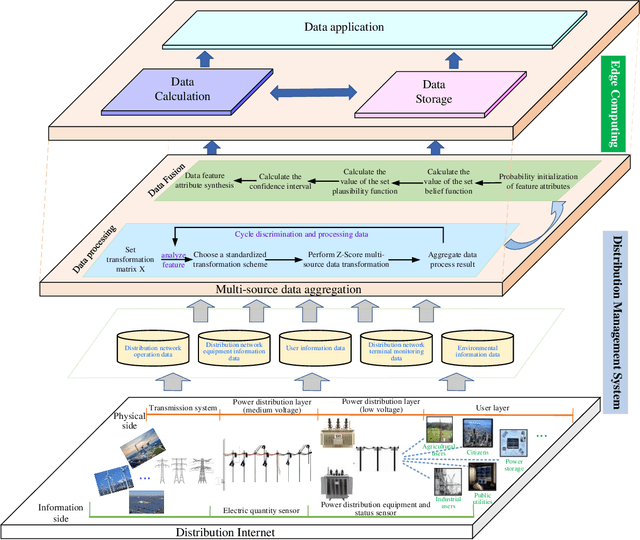



Abstract:With the rapid advancement of the Energy Internet strategy, the number of sensors within the Power Distribution Internet of Things (PD-IoT) has increased dramatically. In this paper, an edge intelligence-based PD-IoT multi-source data processing and fusion method is proposed to solve the problems of confusing storage and insufficient fusion computing performance of multi-source heterogeneous distribution data. First, a PD-IoT multi-source data processing and fusion architecture based on edge smart terminals is designed. Second, to realize the uniform conversion of various sensor data sources in the distribution network in terms of magnitude and order of magnitude. By introducing the Box-Cox transform to improve the data offset problem in the Zscore normalization process, a multi-source heterogeneous data processing method for distribution networks based on the Box-Cox transform Zscore is proposed. Then, the conflicting phenomena of DS inference methods in data source fusion are optimally handled based on the PCA algorithm. A multi-source data fusion model based on DS inference with conflict optimization is constructed to ensure the effective fusion of distribution data sources from different domains. Finally, the effectiveness of the proposed method is verified by an experimental analysis of an IEEE39 node system in a regional distribution network in China.
Coordinated Cyber-Attack Detection Model of Cyber-Physical Power System Based on the Operating State Data Link
Feb 27, 2021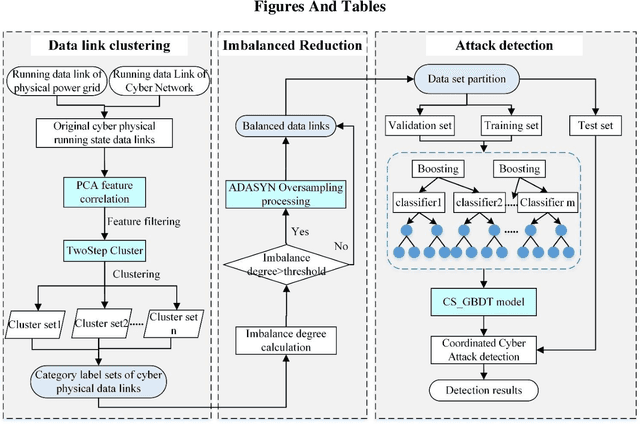
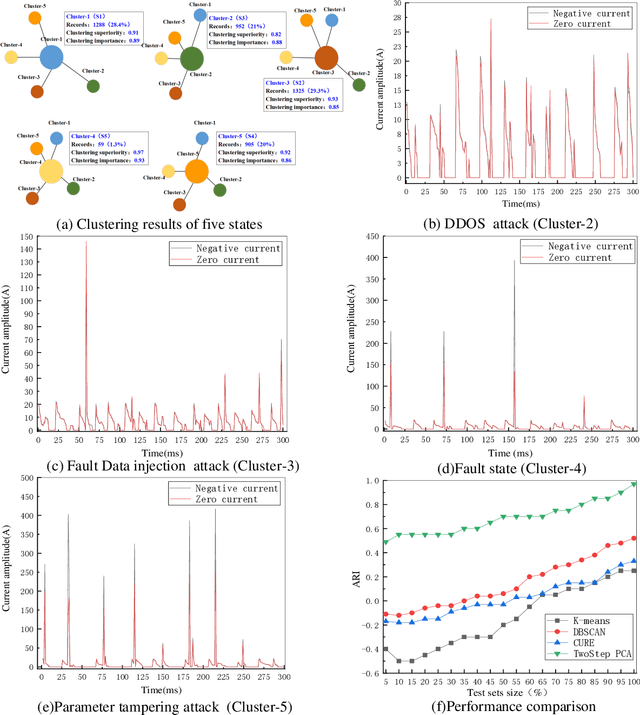
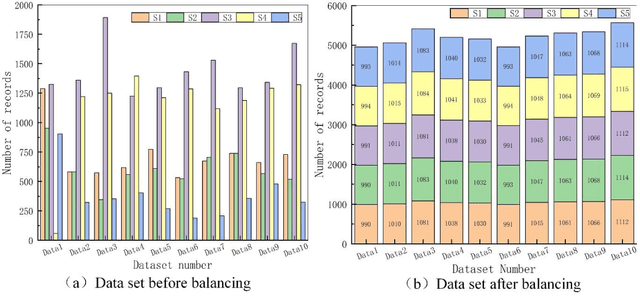
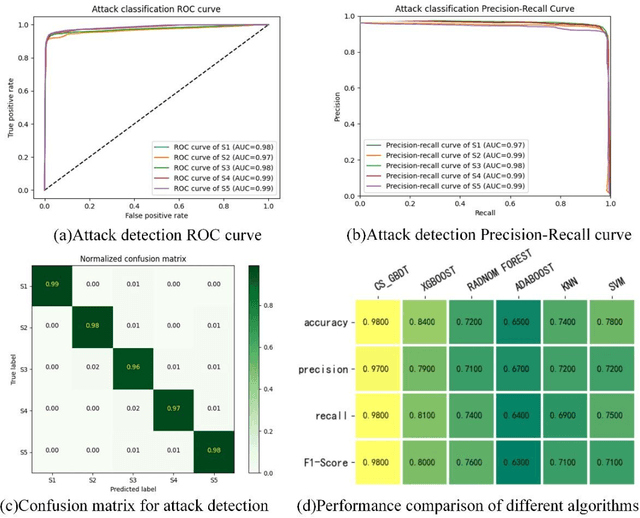
Abstract:Existing coordinated cyber-attack detection methods have low detection accuracy and efficiency and poor generalization ability due to difficulties dealing with unbalanced attack data samples, high data dimensionality, and noisy data sets. This paper proposes a model for cyber and physical data fusion using a data link for detecting attacks on a Cyber-Physical Power System (CPPS). Two-step principal component analysis (PCA) is used for classifying the system's operating status. An adaptive synthetic sampling algorithm is used to reduce the imbalance in the categories' samples. The loss function is improved according to the feature intensity difference of the attack event, and an integrated classifier is established using a classification algorithm based on the cost-sensitive gradient boosting decision tree (CS-GBDT). The simulation results show that the proposed method provides higher accuracy, recall, and F-Score than comparable algorithms.
 Add to Chrome
Add to Chrome Add to Firefox
Add to Firefox Add to Edge
Add to Edge